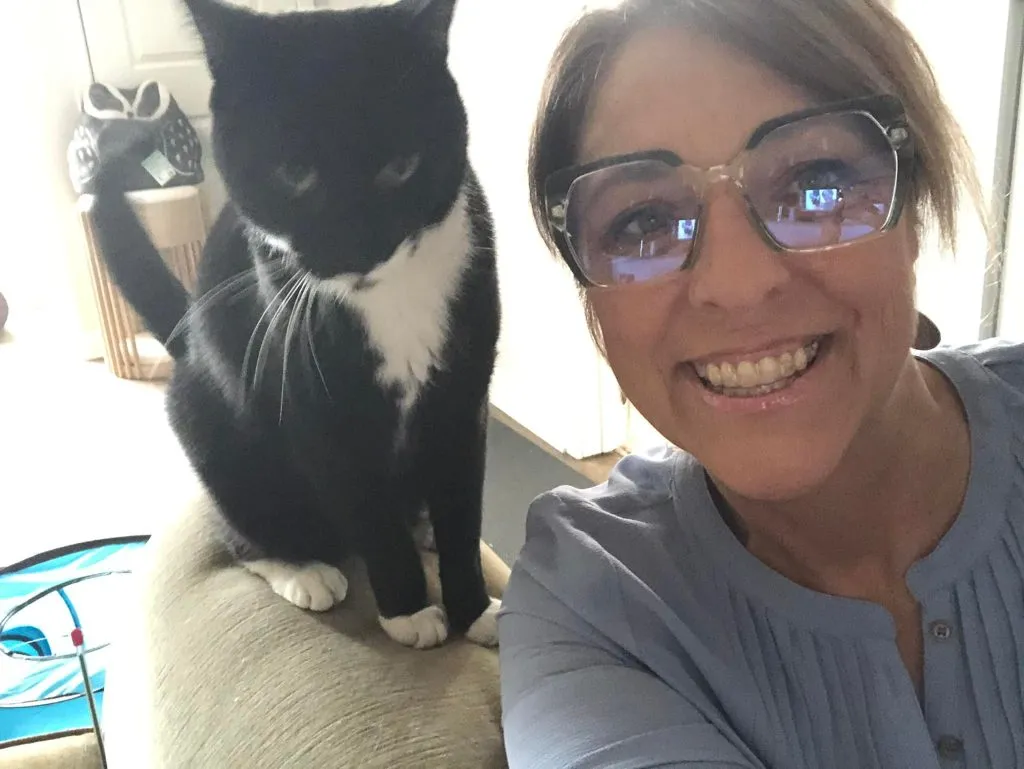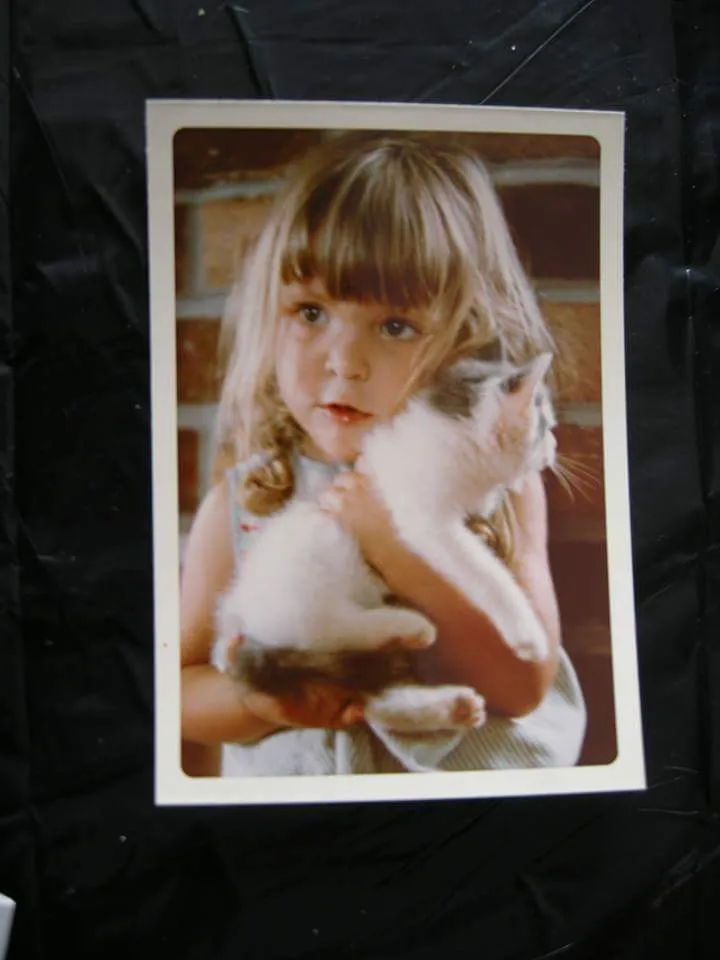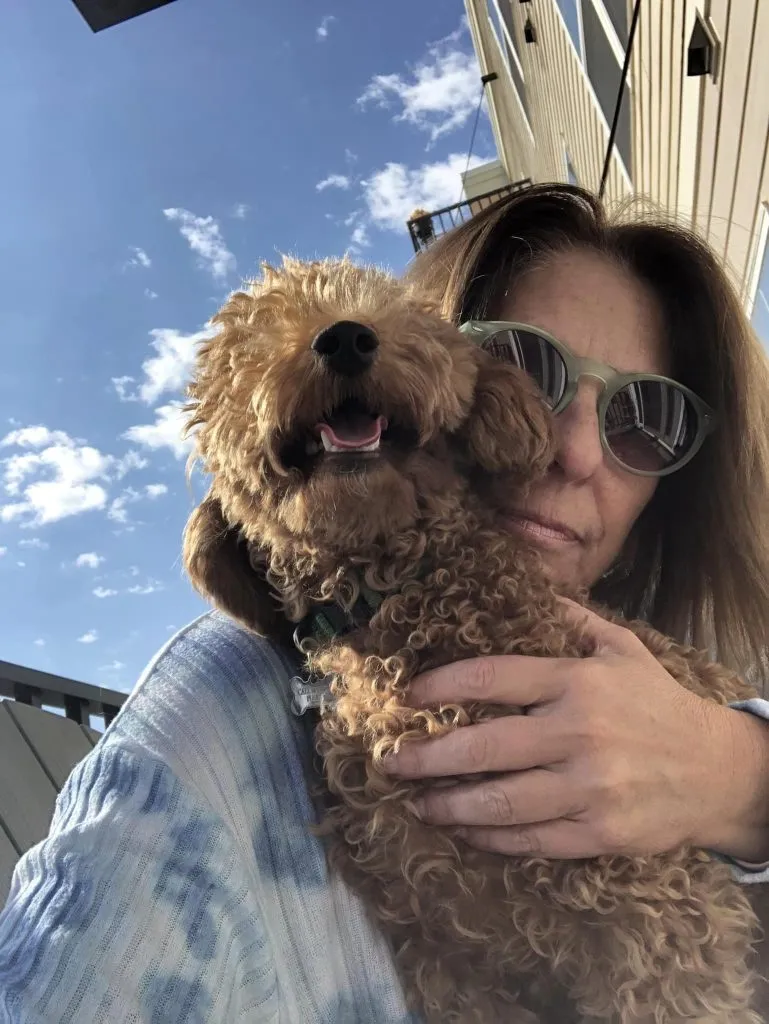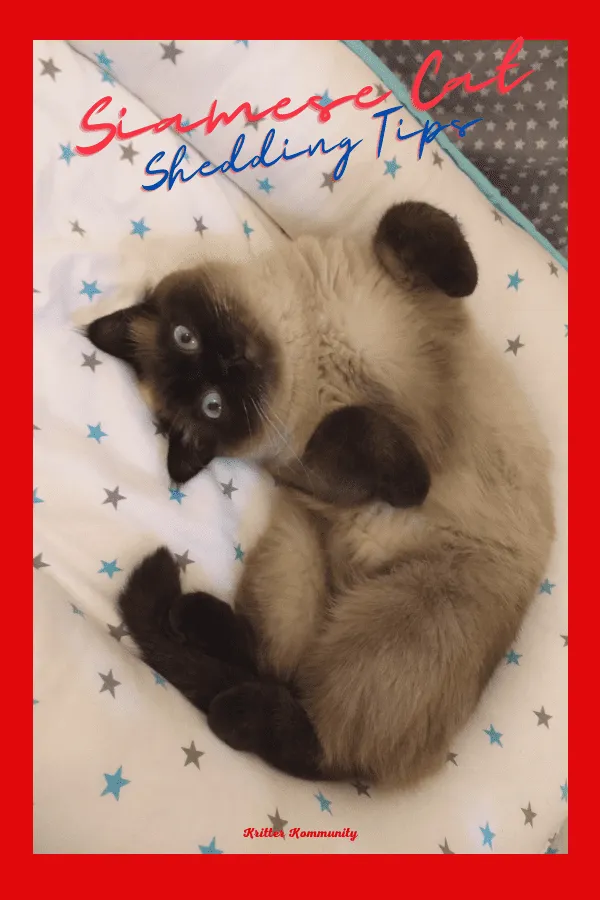NEED TIPS TO REDUCE SIAMESE CAT SHEDDING?
You’re in the right place as I am a cat parent and my Grandma was a Siamese cat parent. And if you haven’t noticed, I am a cat blogger who writes on a variety of Siamese cat topics! I research everything from best food for Siamese cats to overall health needs of Siamese cats.
I’m going to walk you through the process of Siamese cat shedding, different cycles they may experience and how you can minimize their fur coat from becoming a couch cover!
I’m here to demystify it all fur you! In fact, these tips will help especially those who suffer from cat allergies (like me). So get comfortable as we explore how you can reduce Siamese cat fur and dander!
Siamese Cat Shedding 101
Shedding is a natural process for all cats, and Siamese cats are no exception. However, some Siamese cat owners claim that their cats shed less than other breeds, while others say that shedding is a constant issue.
So, what’s the truth about Siamese cat shedding?
First, it’s important to understand that all cats shed to some degree. Shedding is a natural process that allows cats to get rid of old, damaged, or excess hair.
Do Siamese Cats Shed A lot?
Siamese cats have short, fine hair that sheds moderately throughout the year. However, they may shed more during seasonal changes, such as spring and fall. While Siamese cats may not shed as much as some other breeds, they still require regular grooming to keep their coat healthy and shiny.
Understanding Siamese Cat Shedding
Siamese cats are known for their stunning looks and distinctive features. One aspect of their beauty that cat owners need to be aware of is shedding. Shedding is a natural process in cats that helps them get rid of old and damaged fur.
Do Siamese Cats have a lot of Fur?
Siamese cats actually have short, sleek coats that are relatively low-maintenance compared to some other breeds. They don’t typically have double coats; instead, their fur is short and lies close to their body. This means they shed less than breeds with longer or thicker fur. However, they still shed, so regular grooming can help keep their coat healthy and reduce loose fur around the house.
Shedding Basics
Like all cats, Siamese cats shed their fur as part of their natural grooming process. However, the amount of shedding can vary depending on various factors, including the individual cat, age, and health. Siamese cats have short, fine fur that is not prone to matting or tangling. This means that they tend to shed less than other cat breeds.
Seasonal Shedding
Some Siamese cat owners say that Siamese cats shed constantly, while others suggest that shedding is more intense in certain seasons, such as spring and fall. During these seasons, Siamese cats may shed more to get rid of their winter or summer coat. This is a natural process and nothing to worry about.
Shedding Patterns and Cycles
Siamese cats have a unique shedding pattern that is different from other cat breeds. They tend to shed their fur in cycles, which means that they will lose a lot of fur for a few weeks and then stop shedding for a while. This cycle can repeat several times throughout the year.
It’s important to note that excessive shedding can be a sign of an underlying health issue. If you notice that your Siamese cat is shedding more than usual, take them to the vet for a check-up. Your vet can help determine if there is an underlying health problem that needs to be addressed.
Overall, understanding Siamese cat shedding is important for any cat owner. By knowing what to expect, you can help keep your cat healthy and happy.
Are Siamese Cats Hypoallergenic?
The truth is, no Siamese cats are not hypoallergenic but they are one of the least shedding feline breeds. No cat is hypoallergenic, and that includes the Siamese cat. But if you are allergic to cats and still going to get a cat with fur, a Siamese cat is a good option.
The absolute best choice for allergy sufferers is no cat, or a furless cat: Cat Breeds: Are Hairless Sphynx Cats Really Hypoallergenic?
Factors Influencing Shedding
As a Siamese cat owner, you may wonder why your feline friend sheds. Shedding is a natural process in cats, but there are several factors that can influence its frequency and severity. In this section, we will explore some of the factors that can impact the shedding of your Siamese cat.
Health and Nutrition
The health and nutrition of your Siamese cat can play a significant role in their shedding. A cat that is not receiving proper nutrition may have a dull coat and excessive shedding.
I feed my cat Finnegan at least one can of moist cat food everyday.
If you can feed your cat raw food, that is the ultimate! I cannot say that I do this, but I can say that my grandma did it REGULARLY, and her Siamese cats were healthy! You know, have the luxury of raw cat food delivery, and if you can do it, I say go for it! I would if Finnegan ate raw food, but he has been stubborn. He does love wet canned cat food; read on to find out the details.
This blog post will help you understand the importance of wet cat food and some of the healthy choices on the market today: Best Cat Food That Reduces Shedding: Top Picks for a Healthier Coat
FAVORITE WET CAT FOOD TIKI CAT
ONE OF MY FAVORITE WET FOOD OPTIONS IS THE POULTRY TIKI CAT!
HOWEVER, FINNEGAN LOVES FANCY FEAST. Fancy Feast is NOT A GREAT option, but nothing compared to DRY FOOD. (BLUCK! ALTHOUGH MY CAT DOES EAT DRY FOOD AND I EAT JUNK FOOD SOMETIMES!)
I also leave a few bowl of water around. In addition, Finn has his own ‘cups’ to drink from. He loves to drink from my water, so giving him his own glass deters him from mine and provides the hydration he needs.
If you notice that your Siamese cat has thinning hair or bald patches, it may be a sign of a nutritional deficiency or an underlying health issue.
Consult with your veterinarian to ensure that your cat is receiving a balanced and nutritious diet that meets their specific needs.
Environmental Impact
Environmental factors can also influence the shedding of your Siamese cat. Exposure to extreme temperatures, humidity, and air conditioning can cause excessive shedding.
Additionally, living in a dusty or dirty environment can also contribute to shedding. Regular cleaning of your cat’s living space and keeping them in a comfortable environment can help reduce shedding.
Getting the window coverings cleaned will help allergy sufferers tremendously! I wrote a post on this exact topic, and you can read all about it here: Pet Hair, Don’t Care: Cleaning Your Window Coverings In A Pet-Friendly Home
If you are an allergy sufferer (like me), I recommend hiring a service to clean for you if you can afford it. If you clean yourself, wearing a face mask and even eye goggles will prevent dust from getting into your body.
Stress and Anxiety
Stress and anxiety can also contribute to shedding in Siamese cats. Cats are sensitive animals and can become stressed by changes in their environment, routine, or social interactions. If you notice that your Siamese cat is shedding excessively, it may be a sign that they are experiencing stress or anxiety.
Providing a calm and comfortable environment for your cat can help reduce their stress levels and minimize shedding.
Age and Hormonal Changes
As cats age, their bodies undergo hormonal changes that can impact their shedding patterns. Older cats may shed more frequently and have a thinner coat than younger cats.
Additionally, hormonal changes such as pregnancy or spaying/neutering can also impact a cat’s shedding patterns. If you notice a sudden change in your Siamese cat’s shedding pattern, it may be a sign of a hormonal issue or an underlying health problem.
Shedding is a natural process in Siamese cats, but it can be influenced by several factors. By understanding the factors that impact shedding, you can take steps to minimize shedding and keep your Siamese cat healthy and happy.
Grooming Your Siamese Cat
As someone who’s been lucky enough to share my life with Siamese cats – my grandmother had them, and my neighbor’s pride and joy is a Siamese beauty – grooming these elegant felines has to become a regular part of their routine.
Trust me, it’s crucial for their well-being and happiness.
Brushing Techniques
Brushing your Siamese cat’s coat regularly is essential to keep it healthy and shiny.
How do you brush a Siamese Cat?
Use a soft bristle cat brush to avoid damaging their skin.
I recommend the Pet Close brush for daily brushing. The circle one fits right in your hand and has a strap for easy gripping.
If your Siamese cat has thicker fur, you can also use a slicker brush to pull up hair and stimulate your cat’s skin.
Start at the head and work your way down to the tail, brushing in the direction of the hair growth. Be gentle around their stomach and legs, as these areas are more sensitive.
Brush your Siamese cat’s coat at least once a week to remove loose hair and prevent matting. If your cat has longer hair, you may need to brush them more frequently to prevent tangles. Regular brushing also helps distribute natural oils throughout their coat, which keeps it looking healthy and shiny.
Bathing and Nail Care
Siamese cats are generally clean animals and do not require frequent baths. However, if your cat gets into something dirty or smelly, you may need to give them a bath. Use a mild cat shampoo and warm water to avoid drying out their skin. Be sure to rinse thoroughly to remove all the soap.
Trim your Siamese cat’s nails regularly to prevent them from getting too long. Use cat nail clippers and be careful not to cut too close to the quick, which can cause bleeding and pain. If you are unsure how to trim your cat’s nails, ask your veterinarian for advice.
I personally just have my Vet trim Finnegan’s claws once a month. It is easier, they are fast and perfect. No sharp edges or snaggley nails!
If you trim your cat’s claws on your own, watch a video first that can help you see exactly how to get your cat in a physical position to make it super easy. Every cat is different when it comes to claw trimming. My first two cats did not mind so much. Finnegan hates it, hence the Vet.
Dealing with Knots and Mats
If you notice knots or mats in your Siamese cat’s coat, do not pull or cut them out. This can cause pain and injury to your cat’s skin. Instead, use a dematting tool or a pair of scissors to carefully remove the mat. Be sure to hold the hair above the mat to avoid cutting your cat’s skin.
It is not common for a Siamese cat to get mats. Their fur is short so you will not have these issues. One of the many bonuses of a Siamese feline!
Regular grooming can help prevent knots and mats from forming in your Siamese cat’s coat. If you notice a lot of tangles, you may need to brush your cat more frequently or consider a shorter haircut. If you are unsure how to deal with knots and mats, ask your veterinarian or a professional groomer for advice.
In conclusion, proper grooming is essential for the health and happiness of your Siamese cat. Regular brushing, bathing, and nail care can help keep their coat healthy and shiny. If you notice any problems with your cat’s coat, such as knots or mats, be sure to address them promptly to avoid discomfort and injury.
Managing Allergies and Cleanliness
If you or someone in your household suffers from cat allergies, you may be wondering if a Siamese cat is a good fit for your home. While no cat breed is completely hypoallergenic, Siamese cats are known for producing less allergens than other breeds. 1
Hypoallergenic Qualities
Siamese cats have short, fine hair that sheds less than other breeds. Additionally, they produce less of the protein Fel d 1, which is the allergen that causes most cat allergies. 1
Reducing Allergens in the Home
If you do decide to bring a Siamese cat into your home, there are steps you can take to reduce allergens in the environment. Regular grooming, such as brushing your cat’s coat, can help remove loose hair and dander. 1
Investing in a high-quality air purifier can also help to remove allergens from the air. Be sure to choose a purifier with a HEPA filter, which can capture particles as small as 0.3 microns. 2
RELEVANT: A Look At How Pet Air Purifiers Can Help Any Cat Or Dog Owner Control Dander And Minimize Allergies
Do I Need an Air Purifier if I am a Cat Owner?
Yes, you should invest in an air purifier if you are a cat owner. This especially applies to you allergy sufferers!
If you can swing it, this is the absolute best air purifier I have ever had is the Bissell Smart Purifier with HEPA and Carbon Filters.
Bissell Smart Purifer: Why I love it
Why I Swear By This Air Purifier for Cat Owners
As a dedicated cat blogger and enthusiast, I’ve spent countless hours researching and testing various products to ensure a harmonious and healthy environment for my feline companions. Among the array of gadgets and gizmos promising cleaner air, one particular air purifier has completely won me over – and for all the right reasons.
Advanced 3-Stage Filtration
Let’s talk about filtration first. This air purifier boasts a trifecta of filters – a pre-filter, activated carbon filter, and an H13 HEPA filter. This dynamic combination isn’t just for show; it’s a powerhouse in capturing everything from fine particles to stubborn odors. As a cat owner, this feature is an absolute game-changer, effectively tackling pet-related smells and dander.
Medical-Grade HEPA Filter
The inclusion of a medical-grade HEPA filter is a dream come true for allergy sufferers like me. It’s a pro at trapping particles as small as 0.3 microns, ensuring that allergens like dust, pollen, and even wildfire smoke particles are effectively removed from the air.
Combatting Household Odors
The honeycomb-structured carbon filter within this purifier is a marvel. Engineered with thousands of activated carbon pellets, it targets gases, volatile organic compounds (VOCs), and the everyday odors that come with sharing your space with pets – from cooking aromas to lingering smoke. This filter is a hero when it comes to ensuring a fresh-smelling home.
Efficient Room Coverage
Covering a substantial area, this purifier is no slouch. From smaller spaces to larger rooms, it’s AHAM certified and does an exceptional job, providing a specified number of air changes per hour based on room size. This means clean air is consistently circulated throughout your space, no matter the dimensions.
Whisper-Quiet Operation
The low energy consumption and library-like quietness of this purifier are attributes I absolutely treasure. Equipped with five fan speeds, the lowest setting is akin to a serene library atmosphere, making it perfect for bedrooms and ensuring a peaceful night’s sleep for both humans and cats.
Automated Clean Air
What truly seals the deal for me is the Automated CirQulate System. With its VOC sensor, this purifier takes the guesswork out of maintaining clean air by monitoring indoor air quality and adjusting fan speeds accordingly. This feature provides invaluable peace of mind.
This air purifier isn’t just another gadget in the corner; it’s an indispensable tool in creating a healthier and more serene living space for both me and my beloved cats. Its exceptional filtration system, room coverage, whisper-quiet operation, and automated clean air technology make it a must-have for every cat owner striving for a fresh and allergen-free environment.
Do Air Purifiers Get Rid of Cat Odors?
My experience is, air purifiers minimize cat odors. Cleaning regularly combined with a good air purifier can definitely get rid of cat odor.
Since moving to Illinois, I do not need as much space. I switched from using a Bissell Smart Purifier to now using the Germ Guardian AC4825 22” 3-in-1 True HEPA Filter Air Purifier for Home.
Germ Guardian AC4825 22” 3-in-1 True HEPA Filter Air Purifier for Home: Why I Love it
Why This Air Purifier is My Go-To Choice for Cat-Friendly Homes
Now that I do not need to ‘purify’ as my space, I have switched my air purifier. Finding the perfect air purifier has been a game-changer. Let me tell you why this particular one has earned my recommendation.
Thorough Purification for Medium to Large Spaces
Firstly, this air purifier is a powerhouse when it comes to air circulation. It’s tailored for medium to large rooms, ensuring that the air is circulated multiple times per hour.
I keep this in my bedroom usually and it takes care of the entire room and then some. Moving it into the living room is easy enough when I want to change things up.
True HEPA Filtration for Allergen-Free Air
What truly stands out is its True HEPA filtration system. This powerhouse captures a staggering 99.97% of harmful particles as tiny as 0.1 microns. That means goodbye to pesky allergens like dust, pollen, pet dander, and mold spores that often plague cat owners. This is super important to me!
Germ-Fighting Technology
Equipped with UV-C light technology, this purifier goes the extra mile by targeting airborne viruses and volatile organic compounds (VOCs). This is a bonus for me. It’s a reassuring feature, especially during flu seasons, helping reduce viruses like influenza, staph, and rhinovirus. A little overkill for my needs, but it is nice to have!
Ozone-Free and Odor Reduction
The commitment to being ozone-free is a huge plus for me. With activated charcoal filters, this purifier doesn’t just trap dust and pet hair; it also tackles odors from pets, cooking, and more. It’s like a breath of fresh air, literally.
Whisper-Quiet Operation for Peaceful Nights
The cherry on top?
It’s incredibly quiet.
The lowest setting offers a gentle white noise that’s perfect for a peaceful night’s sleep.
This feature is a blessing not just for me but also for my cats who enjoy their beauty sleep undisturbed.
To sum up, this air purifier ticks all the boxes for my cat-friendly home.
Cleaning Tips for Owners
In addition to regular grooming and air purification, there are several cleaning tips that can help reduce allergens in your home. Use a lint roller or vacuum with a pet hair attachment to remove hair and dander from furniture and carpets. 3
Wash your cat’s bedding and toys regularly to remove any accumulated allergens. Use a mild detergent and avoid fabric softeners, which can irritate sensitive skin. 2
Consider using allergen-reducing products, such as sprays and wipes, to clean surfaces throughout your home. Be sure to choose products that are safe for use around pets. 3
By following these tips, you can help manage cat allergies and keep your home clean and comfortable for both you and your Siamese cat.
Diet and Nutrition
As a Siamese cat owner, you know that your cat’s diet is an essential part of their overall health and well-being. Proper nutrition can help reduce shedding and keep your cat’s coat healthy and shiny. In this section, we will discuss some essential nutrients, hydration, and common dietary issues that you should be aware of.
Essential Nutrients
Siamese cats require a diet that is high in animal protein to maintain their lean muscle mass. The protein should come from high-quality sources such as chicken, turkey, or fish. Additionally, Siamese cats need omega-3 fatty acids to keep their skin and coat healthy. You can find these fatty acids in fish oil or flaxseed oil.
Micronutrients are also important for your cat’s health. They include vitamins and minerals such as vitamin A, vitamin E, zinc, and iron. These nutrients help support your cat’s immune system and keep their coat healthy.
Hydration and Health
Water is essential for your Siamese cat’s health. Make sure your cat has access to fresh, clean water at all times. You can also add wet food to their diet to increase their hydration levels. Wet food is also a good source of animal protein, which is essential for your cat’s health.
Common Dietary Issues
Some Siamese cats may have dietary issues that can cause shedding. For example, grains can be difficult for some cats to digest, which can lead to shedding. If you notice excessive shedding, you may want to consider switching to a grain-free diet.
Food allergies can also cause shedding in some cats. If you suspect that your cat has a food allergy, consult with your veterinarian. They can help you identify the allergen and recommend a suitable diet.
In conclusion, a healthy diet is essential for reducing shedding in Siamese cats. Make sure your cat’s diet includes high-quality animal protein, omega-3 fatty acids, and essential micronutrients. Keep your cat hydrated and watch out for common dietary issues that can cause shedding. With proper nutrition, you can help keep your Siamese cat’s coat healthy and shiny.
Health Concerns and Shedding
Siamese cats are generally healthy and low-maintenance, but they can still develop health issues that affect their shedding patterns. In this section, we will discuss some common health concerns that can lead to excessive shedding in Siamese cats and what you can do to address them.
Skin Conditions and Parasites
Siamese cats can be vulnerable to skin conditions and parasites that can cause discomfort and excessive shedding. Fleas, ticks, and mites are common external parasites that can cause skin irritation and itching. Regular grooming and the use of flea and tick prevention products can help prevent infestations and reduce shedding caused by external parasites.
In addition, Siamese cats can develop skin infections caused by bacteria or fungi. These infections can cause itching, redness, and hair loss. If you notice any signs of skin infection, such as scabs or open sores, it is important to consult with your vet to determine the underlying cause and appropriate treatment.
Illnesses Affecting Shedding
Some illnesses can also affect a Siamese cat’s shedding patterns. For example, hyperthyroidism is a common condition in older cats that can cause excessive shedding, along with weight loss, increased appetite, and restlessness. Other illnesses, such as cancer, can also cause changes in a cat’s coat and shedding patterns. If you notice any significant changes in your Siamese cat’s coat, it is important to consult with your vet to rule out any underlying health issues.
When to Consult a Vet
If you notice excessive shedding in your Siamese cat that is not related to normal shedding patterns, it is important to consult with your vet. Your vet can help determine the underlying cause of the shedding and recommend appropriate treatment options. In addition, if you notice any other symptoms, such as lethargy, loss of appetite, or dehydration, it is important to seek veterinary care immediately, as these can be signs of a more serious health issue.
Overall, it is important to be aware of your Siamese cat’s shedding patterns and to seek veterinary care if you notice any significant changes. By taking steps to prevent skin conditions and parasites and addressing any underlying health issues, you can help keep your Siamese cat healthy and happy.
Siamese Cat Breed Comparisons
If you’re considering getting a Siamese cat, you might be wondering how their shedding compares to other breeds. Here are some breed comparisons to help you make an informed decision.
Similar Breeds and Shedding
Maine Coons are a popular breed known for their long, fluffy coats. While they shed less than some other long-haired breeds, they do shed quite a bit. Are Maine Coons hypoallergenic? – NO! Maine Coons are not hypoallergenic, not even close.
If you’re looking for a low-shedding alternative, consider a Balinese cat. Balinese cats are a Siamese variant with longer hair, but they shed less than other long-haired breeds.
Ragdolls are another breed often compared to Siamese cats. While they are known for their plush coats, they do shed more than Siamese cats.
Bengals are another breed that sheds more than Siamese cats. They have short, dense coats that require regular grooming to keep shedding under control.
Low-Shedding Alternatives
If you’re looking for a low-shedding alternative to Siamese cats, consider a Himalayan. Himalayans have long, silky hair, but they shed less than other long-haired breeds. They do require regular grooming to prevent matting, but their shedding is minimal.
RELEVANT: Why Your Himalayan Cat Will Need A Rubber Duckie: Bath Tips For This Long-Haired Cat
Another low-shedding alternative is the Sphynx cat. While they are hairless, they do produce some oil that can cause skin irritation and require regular bathing. However, their lack of fur means they don’t shed at all.
Overall, Siamese cats are a moderate-shedding breed. While they do shed, it’s less than some other breeds. If shedding is a concern for you, consider a low-shedding alternative like a Balinese or Himalayan, or a hairless breed like the Sphynx.
Final Thoughts
If you’re considering getting a Siamese cat, shedding is definitely something to keep in mind. However, with proper grooming, shedding can be managed effectively. Regular brushing is the most effective way to manage shedding in any cat. Soft bristled/slicker brushes are ideal for Siamese cats, allowing you to gently remove loose fur without scratching or irritating the skin.
In addition to grooming, providing your Siamese cat with a loving and affectionate living environment can help reduce stress and anxiety, which can in turn reduce shedding.
Siamese cats are known for their playful and attention-seeking behavior, so be sure to give them plenty of playtime and affection.
TOYS CATS CAN KICK – are a great option!
Proper nutrition is also key to maintaining a healthy coat. Be sure to feed your Siamese cat a high-quality diet that is rich in essential nutrients. This will help keep their fur healthy and reduce shedding.
Overall, while shedding can be a concern for some, Siamese cats are a friendly and playful breed that make great companions for those who are willing to provide them with proper care and attention. With the right grooming and living environment, you can enjoy all the benefits of owning a Siamese cat without having to worry too much about shedding.
Lisa Illman is the Founder of Kritter Kommunity, LLC. She has a tuxedo adult cat and has had him since he was a baby kitten. Before her cat Finnegan, Lisa had had two FIV-positive cats for over a decade. They inspired Lisa to invent a cat enclosure and a portable catio so they could safely sit outside and enjoy fresh air and sunshine. Lisa had a Poodle and a parakeet growing up. She currently loves to pet-sit for her neighbors’ dogs and cats.









Why is Kritter Kommunity Your Trusted Partner?
Our mission at Kritter Kommunity is to promote happy and healthy lives for pets and their owners. We specialize in Barkitecture and designing tips for pet-friendly homes, utilizing the natural instincts of cats, dogs, and small critters to create a home life that pets and people love. From tips on pet care to reviews on pet toys and furniture, we are a go-to source for all things cats, dogs and small critters. Join us in celebrating the joys of pet ownership and providing the best possible lives for our furry friends.





